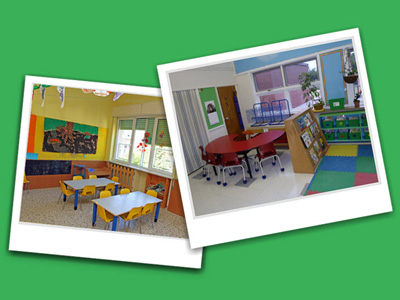 |
Emergency Animal Recall - Brown Bears |
2.00 |
Welcome to Emergency Animal Recall. This collection consists of an overview course which covers the fundamentals of Emergency Recall training for exhibit animals, including:
What exactly is Emergency Animal Recall, and why is it necessary?
What are the benefits of Emergency Animal Recall?
How do you generate support within your organization for a training program, and how do you decide which animals should be trained first?
What equipment will you need, and what preparations will you need to make?
What is the general outline of an Emergency Recall training program, and how do you maintain the conditioning once it has been established?
After completing this Overview, you can continue with the species-specific Brown Bear Emergency Animal Recall course. |
 |
Course 34: Creating Community Collaborations |
2.00 |
Across the country, more and more communities are forming community collaborations to address the out-of-school needs of children and youth of all ages. When different segments of the community join together, share ideas, and pool their resources and efforts to create OST initiatives, children and youth benefit. What one organization or program may not be able to accomplish alone, is often achievable when partnerships and collaborations among diverse groups and individuals are formed.
When OST professionals are knowledgeable about what it takes to create and sustain successful collaborations, they can play an important leadership role in creating OST initiatives and programs that will meet the needs of children and youth in their communities now and in the future.
|
 |
Course 31: The Six "Ps" of Marketing School-Age Programs |
2.00 |
Effective marketing of OST programs is a systematic process that involves research, analysis, assessment of market trends and needs, short-term and long-term planning, and development of effective strategies to promote OST program services and develop a positive image of the program in the community. It is important for OST leaders to recognize that marketing is a far reaching process that includes, but is not limited to, advertising and publicity. When OST leaders take a comprehensive approach to marketing, their programs and projects have an excellent chance of success. Knowledge and understanding of the marketing process is an invaluable tool for OST leaders as they plan and implement new programs and projects, assess the stability and need for improvement of current programs, develop plans for new or expanded programs, and develop a positive public image of the program and its services. |
 |
Course 08: Human Relations Skill Development |
2.00 |
Being able to communicate effectively is an essential human relations skill for school-age care professionals. To be a good communicator, school-age professionals need to understand the components of communication and how the communication process works. They need to identify barriers to clear communication and develop strategies for minimizing or eliminating barriers to communication. School-age care professionals also need to work cooperatively with other team members to solve problems and conflicts. This requires an understanding of how teams work and the characteristics of effective teams. Assessing the current status of personal human relations skills helps each professional identify priorities for making improvements to these skills. |
 |
Growing as a Professional: Health and Stress Management (Collection) |
2.00 |
An important part of professionalism in the school-age field is continued personal growth and development in relation to the field. This requires using appropriate resources and strategies to further individual professional development. In this course, we will explore professional development opportunities for school-age staff. |
 |
Course 15: Designing Effective Indoor School-Age Play and Learning Environments |
2.00 |
Planning effective environments is the first step to planning an effective program. When environments are attractive, interesting, and comfortable, they provide a backdrop for a varied program that can address the developmental needs of school-age children. The look and feel of well-planned environments send messages that let children know they are welcome and valued. They are inviting and encourage children to get involved and stay engaged with program activities and experiences |
 |
Exploring Four Areas of School-Age Development (Collection) |
2.00 |
One of the most helpful ways to gain an understanding of the needs and interests of youth between 5 and 12 is to examine their development from four different perspectives: 1) Physical Development, 2) Cognitive Development, 3) Social Development, and 4) Emotional Development. It is important for staff to keep all four of these areas in mind when planning and implementing program activities and experiences. Keeping the four areas of development in mind leads staff to design a balanced set of experiences that nurture and growth and development of the "whole child." |
 |
Course 23: Providing Homework Support |
2.00 |
The National Standard Objectives of Learning (SOL) have raised questions about the role of school-age programs in providing homework help and support. Research indicates there are many different ways to provide effective homework support in school-age programs. Some are more structured than others. When planning a homework support program, it is important for school-age programs to develop a homework philosophy that is consistent with the program’s overall philosophy and reflects current research on best practices for providing homework help. The homework philosophy should also reflect the needs of parents and children in the program and strike a balance between homework needs and other experiences that help children grow and learn out-of-school. When staff know how to design homework environments, identify appropriate homework materials, and use effective strategies to guide children’s efforts, homework support can be an effective component of ongoing programs. |
 |
Course 25: Focus on Health and Stress Management |
2.00 |
Every day OST professionals dedicate themselves to caring for and nurturing children, youth, and families. Often OST professionals are so dedicated to serving others, they neglect their own needs. When this happens, OST staff can experience stress that causes them to become overwhelmed, exhausted, frustrated, dissatisfied with job responsibilities, and unappreciated. When OST professionals maintain a healthy balanced lifestyle, they are in a much better position to face the challenges of supporting and nurturing children and families with positive energy, enthusiasm, patience, and empathy. By developing self-awareness; linking their personal and professional goals; developing a healthy balanced lifestyle; and identifying and managing stressors effectively, OST staff can create and maintain a positive sense of well-being that allows them to maximize their ability to build positive relationships with children, parents, colleagues, and others. |
 |
Course 09: School-Age Care as a Family Service - Part One |
2.00 |
Strong, positive, cooperative relationships with parents and families are at the heart of quality school-age programs. Unfortunately, positive relationships with parents and families are not always easy to achieve because parents, like children, have widely varying personalities; some are easier to reach than others. Parents in school-age programs have different ideas, values, concerns, knowledge, pressures, lifestyles, plans, dreams, resources, and constraints. Staff who are successful in building positive relationships begin by recognizing the importance of accepting parents as the most important people in children’s lives, regardless of differences among them. They understand that staff attitudes toward parents can have a strong effect on whether or not staff can establish positive relationships with parents. Staff in quality programs make a commitment to learning as much as possible about parents’ needs, interests, wants, and concerns and develop effective strategies for making positive connections with parents. |











